Useful properties of indoor ficus and its use in traditional medicine
Ficus has long been grown in homes. They appreciated it for its beautiful shiny leaves and unpretentious care. At the end of the last century, he was undeservedly forgotten, but soon returned to our homes to give his beauty and purify the air. In addition, almost all parts of indoor ficus are used as raw materials in folk medicine, since they have useful and medicinal properties.
Content:
- Types of indoor ficus
- The composition and benefits of ficus
- Harmful properties of the plant
- Treatment of mastopathy
- Getting rid of toothache
- Treatment of arthritis, radiculitis, osteochondrosis
- Removal of calluses and warts
- Removal of bruises
- Use for advanced cough
- Dysentery treatment
- Folk omens and beliefs
Types of indoor ficus
The homeland of the plant is Southeast Asia and Africa. Of almost 8 hundred varieties of ficus, about two dozen are grown indoors. They differ in the shape of the bush, the length of the shoots, the size, color and shape of the leaves.
The leaves are arranged alternately, although there are plants with the opposite type of placement on the branches. Their stipules are often large. The edges of the leaf are smooth, lobed or serrated. Ficuses differ from other plant species in that their sap is white. Because of this, it is called milky.
Flowers of some species grow singly, but can be collected in a raceme in axillary inflorescences.
Cultural species of ficus:
- Rubbery - a common species with large leathery leaf plates of a dark green color. There are two-color and three-color varieties.
- Fig (ficus carica, fig tree) with rough 5-toed leaves and delicious sweet fruits.
- Rooting (ampelous) with small leaves on thin shoots.
- Benjamin, monochromatic or with white and light green spots on the leaves and a pointed end.
- The variegated has leathery leaves on one plant, which differ in shape. They are dark green in color with small brown spots.
- Benedict's tree with downward branches covered with narrow leaves.
- Triangular got its name from the shape of the leaves that adorn the bright brown shoots that hang down.
- Moklame is a tall shrub with rounded leathery bright green leaves.
- Lyre-shaped with large leaves, the contour resembling this musical instrument.
- Banyan tree forms 3-4 trunks from overgrown aerial roots. The shoots are decorated with long, 15 cm, dense leaves. Used for bonsai.
- Ivy has leaves of 1 cm on petioles 0.5 cm long.
- Sacred with leaves, the length of the stalk is 2 times the length of the leaf. When the pressure changes, drops appear on the leaf plate, which are called tears of a tree.
The composition and benefits of ficus
Ficus raw materials include:
- Palmitic acid
- Flavonoids
- Furocoumarins
- Bergapten and Psoralen
- Ficusogenin
- Essential oils
Ficus leaves make indoor air cleaner by absorbing carbon dioxide and chemical compounds and producing oxygen. It will decorate a residential building or office. Some of the ficuses contain rubber.They are used in countries of natural growth for the extraction of raw materials.
Useful video about ficus:
In folk medicine, juice, tinctures, and cakes from ficus leaves are used. They are used to treat calluses, boils, toothache, and remove bruises.
The use of the plant for medicinal purposes:
- Tinctures treat diseases of the joints resulting from metabolic disorders and inflammation.
- They use a medicine made from ficus raw materials, even for the treatment of mastopathy and oncological diseases.
- Ficus seedlings are used to increase the amount of milk in lactating women.
- Rinse the mouth with infusions of leaves, soften the abscesses.
- Poultices are used to treat colds.
- Leaves of ampelous ficus, plucked from a bush, treat dysentery and carbuncles.
- Infusion of stems treat rheumatism, gargle with ulcers of the larynx.
- The juice obtained from the stalk of ficus is used to treat skin diseases, hemorrhoids, and indigestion. They even help with tuberculosis.
- Cystitis and bladder disorders are treated with decoction of the roots.
In the homeland of ficus, it is considered a means of increasing male strength.
Harmful properties of the plant
The ancients argued that any medicine is at the same time a poison, depending on the dose taken. Ficus is a strong allergen. Therefore, it is better for asthmatics to avoid it and not grow it in the house.
It should not be allowed that the milky juice that is released from the cut of shoots or leaves is considered poisonous.
Do not allow it to come into contact with the skin, especially its delicate areas. This can cause irritation and redness and itching. Therefore, you need to protect young children from picking beautiful ficus leaves. Pets can gnaw young shoots.
Treatment of mastopathy
To prepare the medicine you need:
- 2 ficus leaves and honey to taste.
- Clean sheets are crushed with a meat grinder, honey is added.
- Store the product in the refrigerator.
1 teaspoon is taken orally once a day, at the same time. The course of treatment is carried out for a week, then they take a break for 2 weeks and repeat the procedure.
Before ingestion, you need to consult a doctor. You cannot be treated with ficus preparations for patients with cardiovascular diseases, pregnant women and children.
Getting rid of toothache
Recipe for preparing the product:
- Prepare 1 tablespoon of ficus juice and 3 tablespoons of alcohol.
- Mix them in a dark bowl and leave for 2 days in a dark place.
For use, cotton wool is moistened in tincture, applied to a sick tooth. After a while, they take out the tampon and rinse the tooth with a freshly prepared decoction of chamomile.
This remedy does not heal teeth, but only relieves pain. It is used by those who can tolerate it for 2 days while the medicine is being prepared.
Treatment of arthritis, radiculitis, osteochondrosis
For the preparation of a medicine for diseases associated with pain in the vertebra and joints, ficus leaves and vodka are used. In the course of treatment, you will need ordinary kitchen salt.
Treatment features:
- 1 leaf of ficus is washed and chopped in a meat grinder.
- A measured dose of vodka (250 ml) is added, poured into a glass jar.
- 2 weeks insist in a dark place at a temperature of about 15 degrees.
- Strain through 2 layers of gauze, poured into a bottle. It is better if it is made of dark glass.
- They hide the medicine in the refrigerator or put it out in the cold.
Before use, prepare 250 g of kitchen salt. Pour it into the bath. Add warm water. After taking a bath, they rub the problem areas with the prepared infusion and wrap them up with a warm woolen cloth. Treatment continues for up to 10 days.
Removal of calluses and warts
If it is risky to ingest a medicine prepared at home, then using it externally is not so dangerous. Ficus leaves are used to fight calluses.
To prepare it, you need to prepare 1 leaf of ficus and 50 g of acetic acid with a concentration of 70%:
- The sheet is washed, crushed with a meat grinder.
- Add cooked vinegar, stir thoroughly.
- Steam the leg with the callus.
- Ficus gruel is applied to gauze and applied in the area of the corn. Fix with a plaster.
- After a day, the bandage is removed, the softened tissue of the corn is removed.
Most often, to completely remove the callus, the procedure must be repeated several times.
To get rid of warts, a medicine is prepared from 80 g of ficus juice and 40 ml of vinegar essence. The product is stored in a dark glass bottle with a closed lid. For treatment, 2 drops of the agent are applied to the wart so that it does not get on the skin. After 10 seconds, wash off with water. Repeat the procedure until the wart is completely removed.
Removal of bruises
Ficus leaves are used to quickly remove bruises. Apply cakes and ice from ficus.
To make a flat cake, you need 1 leaf of ficus, 1 teaspoon of flour and the same amount of bee honey:
- A clean sheet is crushed through a meat grinder, honey and flour are added.
- Knead, make a cake.
- Apply to the bruise, fix with a warm cloth. Usually, the procedure is carried out at night.
To make ice, take 3 leaves of ficus:
- Grind them with a knife, fill them with water so that the leaves do not burn.
- Boil for 5 minutes. After the broth has cooled, filter it, pour it into molds, and freeze it.
- The prepared ice is applied to the bruise and kept for 10 minutes.
A decoction of ficus leaves is used to reduce nodes with hemorrhoids, warts. Prepare it in the same way as for making ice.
Use for advanced cough
Bring one and a half glasses of water to a boil in a saucepan. Turn off, lay a leaf of ficus for 3 minutes. Take out, put a spoonful of honey.
Applied to the chest, wrapped in a flannel cloth. Leave until morning, then remove. You can repeat the procedure until complete recovery.
Dysentery treatment
For 50 ml of ficus juice, you need to take 100 ml of alcohol. Fresh ficus leaves are crushed in a meat grinder. Squeeze out the juice. Mix it with alcohol. Poured into a dark glass bottle and insist in a cold place for 2 days.
The first day take 1 tbsp. spoon after 2 hours. On the second and third day of treatment, take 5 times. On the 4th day, drink 1 teaspoon after meals 3 times a day.
More information about the properties of ficus can be found in the video:
Folk beliefs
A prominent plant has always attracted attention, many legends and superstitions are associated with it. In Thailand and China, ficus is considered a sacred plant. His image even flaunts on the Thai flag.
The Chinese give their relatives the flower itself, or at least its image in a beautiful frame. It is believed to bring beauty and strength with it.
In many countries, it is believed that the presence of ficus contributes to the conception of a child, so it is raised by couples who do not have children.
There is even a belief that the ficus quenches or mutes the feeling of hunger. To experience its effect, set the flower closer to the refrigerator where food is stored.



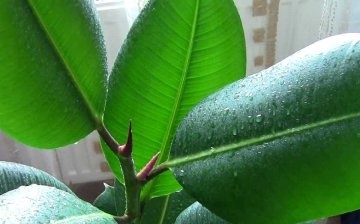
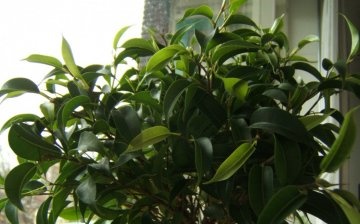
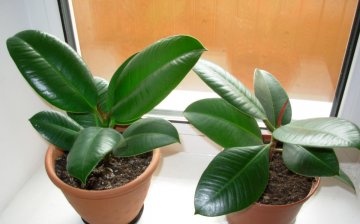
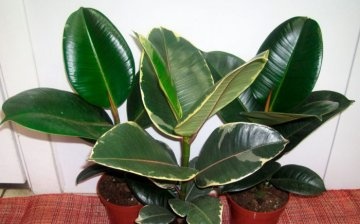


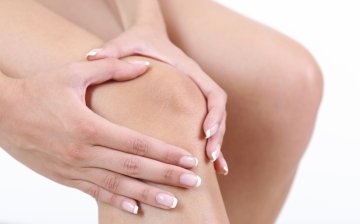
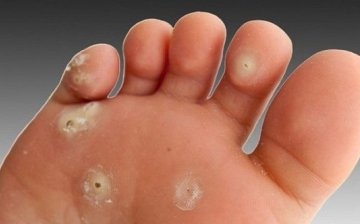
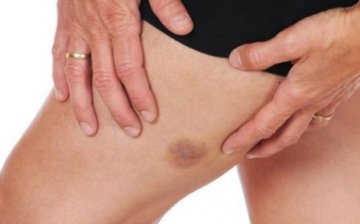











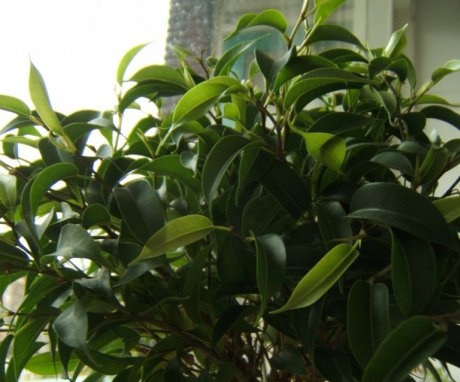
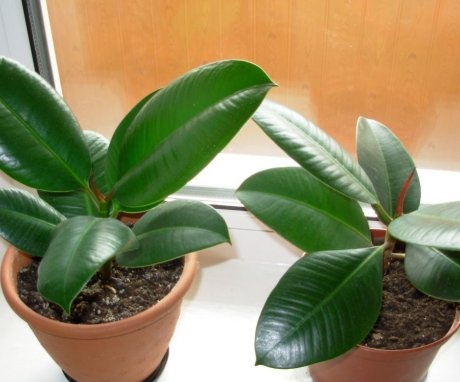
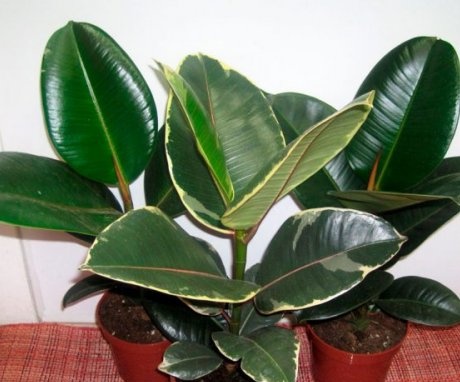


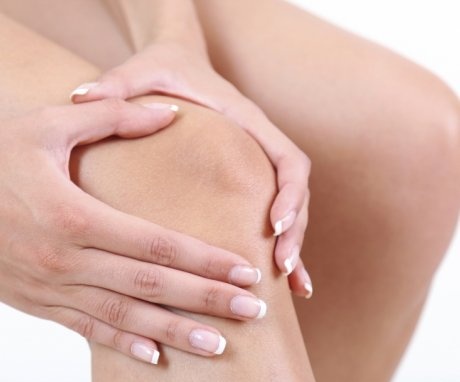
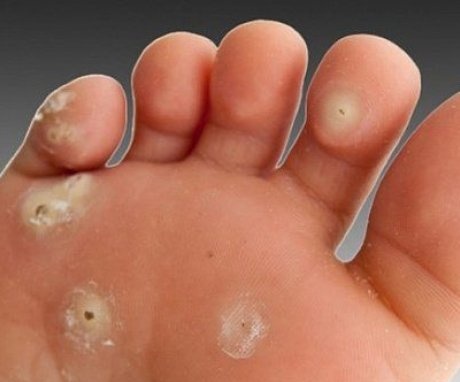
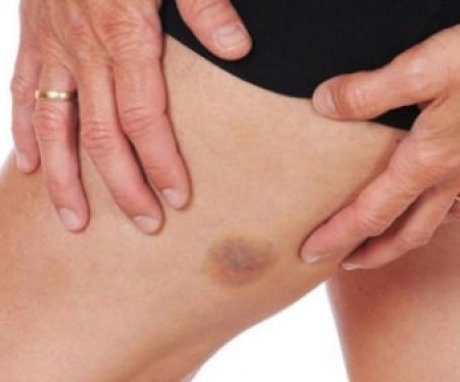

We have several types of ficus growing at home, but I never thought that it is so widely used in traditional medicine. True, in order to have a good effect from such treatment. You need to know exactly what kind of ficus is used for rinsing. Or lotions otherwise, you can only harm yourself.
How to brew ficus correctly for the treatment of cystitis and kidney? Do I need to dry the leaves of the ficus before making the tea leaves, or can you also brew the green one? Very interesting information.
I tried to use the juice of this plant and alcohol tincture as an anti-inflammatory external agent. I cannot call the results optimal, perhaps the very variety that grows in my house is not suitable for this.
It is interesting that usually everywhere they write about ficus that it cannot be kept in living quarters, because it consumes oxygen. I did not find information about the allergen. My animals have never gnawed ficuses, maybe they felt that they were poison.
I did everything according to the recipe, from the corns really in two days, the corns began to disappear. But you have to be more careful with acetic acid, you will eat a little too much of the whole pile, be careful.
I want to try it as a remedy for getting rid of warts. I have never heard of the medicinal properties of ficus before, although I have been growing it for a long time. I have only heard such a belief that the donated ficus leads to an early replenishment.